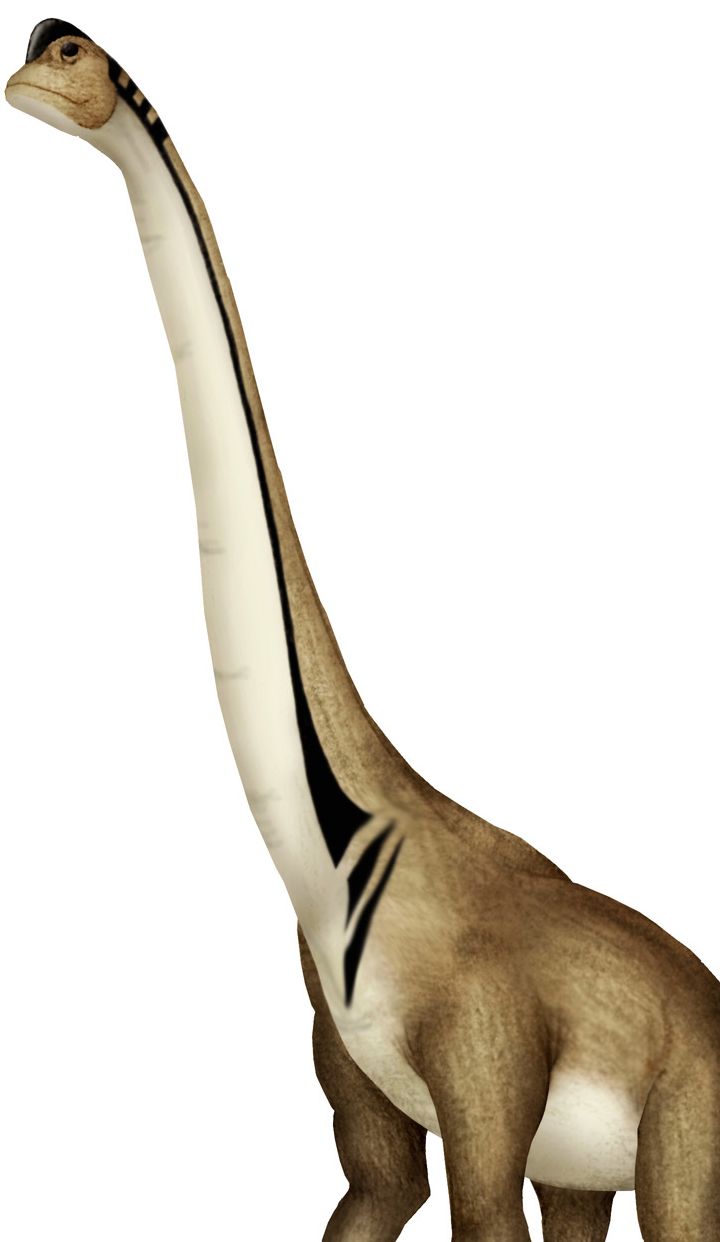A dinosaur made by the Flood

The story of Ultrasaurus
Beginning in the early 1970s, American paleontologist James A. Jensen (1918–1998) led a series of fossil-hunting expeditions in Colorado’s Dry Mesa quarry (Jurassic). During this time, ‘Dinosaur Jim’ uncovered a number of huge dinosaur bones, including vertebrae, and shoulder and pelvic elements.
Discovering a giant
He found what appeared to be three new types of dinosaurs, all of them truly giant long-necked sauropods. One of these, which he named Ultrasaurus macintoshi, would stand out above the rest.1
It was apparently a brachiosaurid, estimated as over 30 metres (100 ft) long, and weighing as much as 180 tonnes.2 Ultrasaurus (‘beyond lizard’)3 was described as “a whopping great dinosaur!” 4
Pop culture star
Discovered and described in the 1970s and 80s, this giant sauropod captured the imaginations of many during the early 1990s, when ‘Dinomania’ was affecting popular culture. Everything from TV mini-series, toys, magazines, trading cards, books, art, and more featured the massive dinosaur.
But in the background to all this fame, Ultrasaurus had scientific problems. These started with its impressive-sounding name. Evidently, Jensen never officially named his prized dinosaur until 1985. This left the name Ultrasaurus still available for use when assigned to a Korean dinosaur find in 1983.
Giant identity crisis
In 1991, after the problem was recognized, Ultrasaurus became Ultrasauros. This seemed to resolve the identification problems for the giant brachiosaurid.
However, it was about to lose a lot more than its name. A critical assessment of the fossil bones assigned to Ultrasauros, undertaken in the mid-1990s, revealed that this famous giant among giant North American dinosaurs never really existed. It was a mistakenly interpreted chimera, comprising up to three different sauropod dinosaur species: Brachiosaurus, Supersaurus, and/or Barosaurus.5
A ‘Chimerasaurus’ made by the Flood
During the Flood, all vertebrate life on land that was not in the Ark was eventually overcome by water (Genesis 7:21–22). That included the enormous, whale-sized sauropod dinosaurs. After succumbing to the prevailing waters, the giant bones of Jensen’s sauropods had become separated from each other.
This was likely due to a process of ‘bloat and float’ rotting of the ligaments that had held them together,6 and/or scavenger action. This scavenging could have taken place while floating (by marine predators), and/or after their remains sank to the sea bottom.
One possibility is that the carcasses were washed up onto briefly exposed land, where predatory dinosaurs, which till then had survived by swimming, had sought refuge.7 (Evidence of such scavenging by other dinosaurs, such as tooth marks, has been found on dinosaur bones subsequently washed into huge ‘graveyards’.) Thereafter, powerful water current action in the midst of this massive, complex catastrophe likely jumbled up these bones, before they were rapidly entombed by Flood-carried sediment. This would have protected them from further scavenging and decay. The minerals in the encasing sediment caused it to soon harden.
Such events would have resulted in a disordered bonebed. When interpreted under an evolutionary worldview that discounts the reality of the Flood, this led to the ‘discovery’ of a dinosaur that never existed.
A biblical legacy
The story of Ultrasaurus is more than just an interesting episode in the history of dinosaur discovery. It can actually teach us important biblical truths, e.g.:
- The relevance of a biblical worldview that takes Genesis as history.
- The amazing ‘extreme engineering’ displayed in Christ’s creation of dinosaurs.
- The incredible power and complex dynamics of the Flood.
- The awesome seriousness of God’s judgment on sin.
All of this points to the profound reality of what Christ accomplished, by dying on the Cross for the forgiveness of sins.
References and notes
- Taylor, M., Sauropod Vertebra Picture of the Week, Supersaurus, Ultrasaurus and Dystylosaurus in 2019, part 1: what we know now, svpow.com, 3 Jun 2019. Return to text.
- Taylor, M., Sauropod Vertebra Picture of the Week, Supersaurus timeline, svpow.com, 17 Jul 2019. Return to text.
- McGowan, C., Dinosaurs, Spitfires, & Sea Dragons, Harvard University Press, p. 118, 1991. Return to text.
- Cronkite, W., Dinosaur!: The Tale of a Bone, A&E VHS, 1991. Return to text.
- Taylor, M., ref. 1. Return to text.
- Neller, R., Dead crocodiles down under, Creation 39(3):14–15, 2017 creation.com/dead-crocodiles. Return to text.
- Oard, M., Dinosaur challenges and mysteries, Creation Book Publishers, pp. 124–125, 2011. Return to text.









Readers’ comments
Comments are automatically closed 14 days after publication.